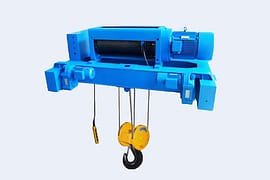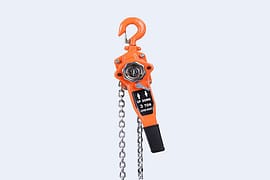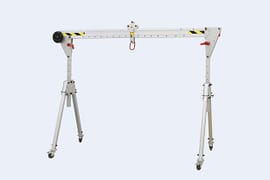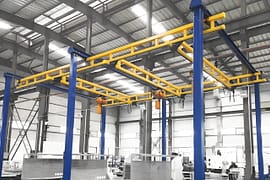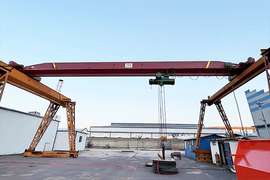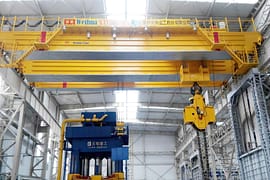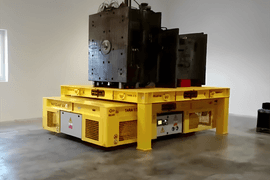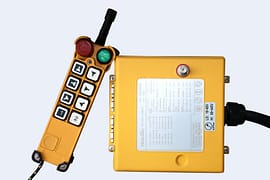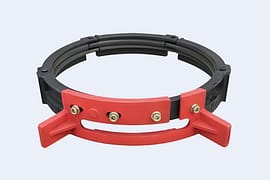Effective Crane Wheel Heat Treatment: Improving durability and performance
Table of Contents
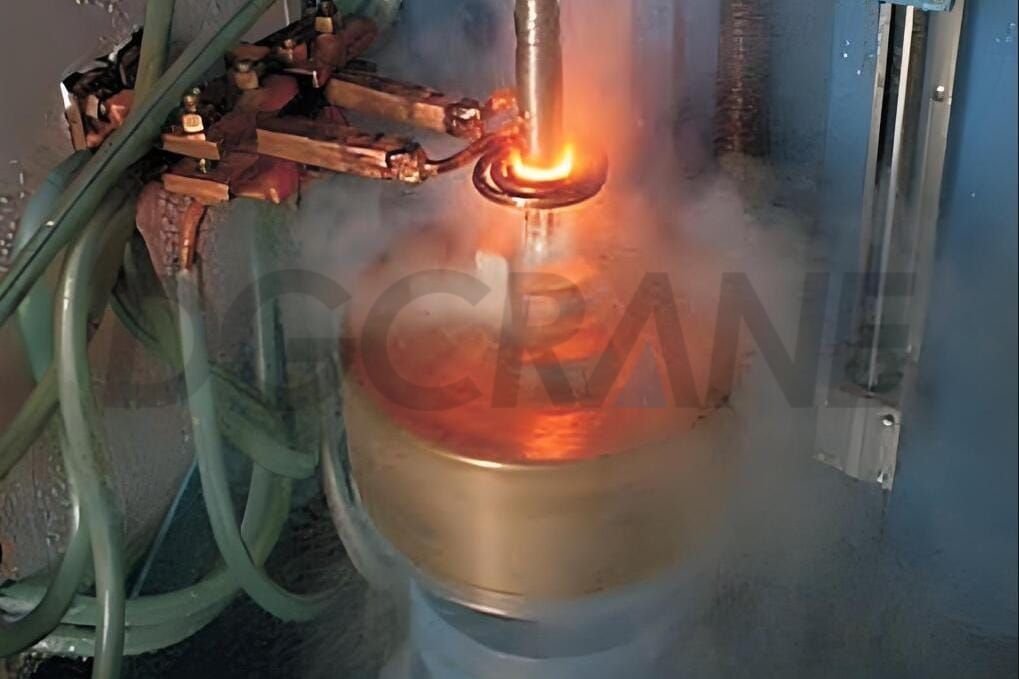
When fabricating wheels, many non-crane professional manufacturers and crane users do not carry out heat treatment of crane wheels or have unreasonable technical specifications. As a result, the wheels are prone to wear or premature hardening layer spalling, leading to a very short lifespan.
This issue is particularly prominent in frequently used locations such as metallurgical plants, docks, seaports, and railways, where the lifespan of the wheels is only one or two years, resulting in substantial manpower and material costs for maintenance.
Our experience indicates that by establishing reasonable technical specifications for wheels and adopting comprehensive heat treatment processes, we can significantly extend the lifespan of the wheels. The following are some of the experiences shared by our factory in the heat treatment of crane wheels.
Materials and Technical Specifications for Wheels
Our factory’s crane wheels use two types of materials: ZG55 and ZG50SiMn. The average chemical composition of ZG50SiMn is C0.5%, Si0.6%, and Mn1.0%. For ZG55 wheels, the specified tread hardness is HB300–350, with a quench-hardening layer depth where the hardness at 20 mm from the tread surface should be ≥HB260. For ZG50SiMn wheels, the specified tread hardness is HB350–400, with a hardness of ≥HB280 at 20 mm from the tread surface. There are two heat treatment processes for the wheels: one is the overall clamping plate quenching method, and the other is the medium-frequency surface quenching method.
Heat Treatment Process
Impact of Heat Treatment on Wheel Processing
Different heat treatment methods affect the wheel processing procedure. When using medium-frequency induction heating, the processing procedure is as follows: Rough blank → Normalizing + Tempering → Finish turning the tread surface and side surfaces, rough turning the inner bore (leaving 2.5 mm allowance on each side) → Medium-frequency heating with water quenching + Medium-temperature tempering → Finish turning the inner bore → Keyway machining → Assembly.
When using the overall clamping plate quenching method, the process changes to Rough blank → Normalizing + Tempering → Rough turning (leaving 2.5 mm allowance on each processing surface) → Furnace heating with overall clamping plate quenching + Medium-temperature tempering → Finish turning → Keyway machining → Assembly.
For large-scale production of wheels, medium-frequency heat treatment not only saves energy and processing time but also achieves higher tread hardness. Therefore, medium-frequency heat treatment should be promoted in specialized manufacturing plants. On the other hand, the overall clamping plate quenching process, which does not require specialized equipment, is suitable for small-batch production or user-customized parts. However, the tread hardness can only be controlled within HB300–350, and achieving higher hardness is difficult, making it less efficient.
Considering that non-specialized factories have smaller production volumes and do not need a full set of medium-frequency induction heating equipment, only the overall clamping plate quenching process is introduced here.
Overall Clamping Plate Quenching Process for Wheels
The overall clamping plate quenching process for wheels is as follows: Place the wheel in a box-type electric furnace and heat it to 850–870°C, maintaining this temperature for 2–4 hours. After removing the wheel from the furnace, place it in a fixture and then immerse it in a water tank for quenching. Finally, heat the wheel in a pit-type tempering furnace to 470–490°C, maintaining this temperature for 4–6 hours, and then allow it to air cool. The wheel should stay in the water for approximately 1 minute per 100 mm diameter.
Typically, when removing the clamping plate, the wheel core will still be dark red. The purpose of using the fixture is to prevent the hardening of the web and the axle hole. The clamping plate diameter is equal to the nominal diameter of the wheel minus 30 mm, and its thickness is 25 mm. After a period of use, the surface of the clamping plate in contact with the wheel should be turned to maintain a smooth surface.
Hardness Testing of Crane Wheels After Heat Treatment
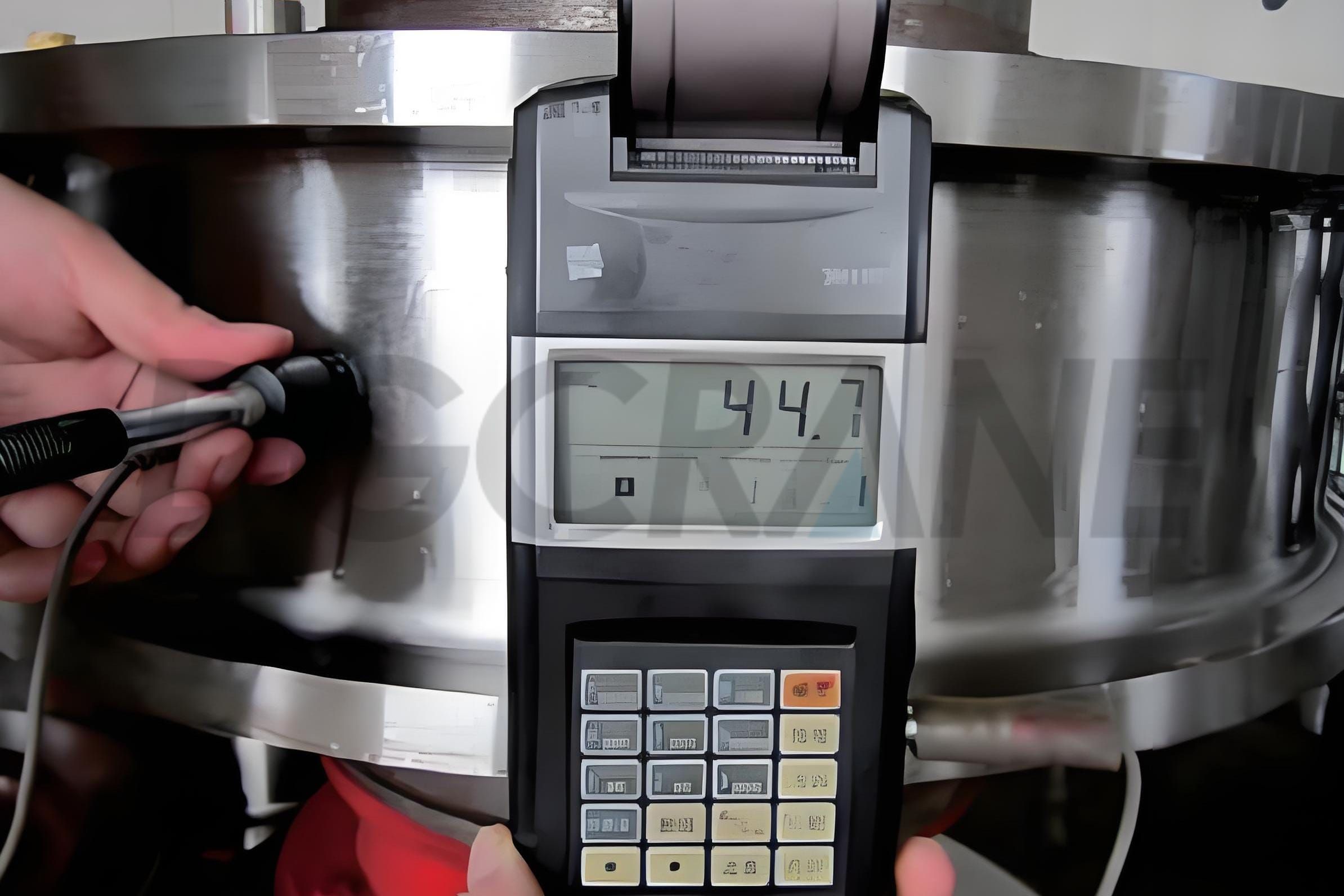
Hardness Testing of Crane Wheel Treads
Portable hardness testers are commonly used for testing the hardness of crane wheel treads. To test the tread hardness, measure at three evenly spaced points along the circumference of the wheel tread. If two out of the three points meet the hardness requirements, the tread hardness is considered acceptable.
Depth of Quench-Hardening Layer Testing
The depth of the quench-hardening layer on crane wheels is mainly used to verify the heat treatment process and is a destructive test. A finished wheel can be cut open with a thin, slice-type milling cutter. The cut wheel should be securely supported, and hardness testing should be performed at 20 mm from the surface using a hardness tester. During milling, it is important to control cutting speed and cooling to avoid overheating the cut surface.
Standards for Hardness and Quench-Hardening Layer Depth Testing
Hardness and quench-hardening layer depth testing of crane wheels should be conducted according to the national standard JB/T 6392-2008 “Crane Wheels,” as detailed in the following table:
| Wheel tread diameter (mm) | Tread and Hardness of inner side of rim HBW | Depth of hardened layer at 260 HBW (mm) |
| 100~200 | 300~380 | ≥5 |
| >200~400 | ≥15 | |
| >400 | ≥20 | |
| Note: Depending on the specific operating conditions of the crane, wheels with higher or lower hardness may be selected. | ||
Mechanical Properties of Wheels After Heat Treatment
- Increased Strength
Heat-treated wheels have higher hardness and toughness, allowing them to withstand greater loads and bending stresses. Additionally, heat treatment can form a hard layer on the wheel surface, providing protective benefits. - Improved Wear Resistance
Heat treatment enhances the surface hardness of the wheel, thereby increasing its wear resistance and reducing the rate of wear. Heat-treated wheels require less frequent maintenance during use, which helps save on costs. - Enhanced Fatigue Resistance
Repeated loading can lead to fatigue cracks in wheels, affecting their lifespan. Heat treatment improves the crystal structure and microstructure of the material, thus enhancing the fatigue resistance of the wheels and extending their service life.
In summary, heat treatment is a key process for improving the strength, wear resistance, and fatigue resistance of wheels. In crane wheel manufacturing, heat treatment plays a crucial role in enhancing wheel performance and ensuring the safe operation of cranes.
We can provide various types of heat-treated crane wheels and offer custom non-standard designs according to your specific requirements. If you have any needs, please feel free to contact us!
Contact Details
DGCRANE is committed to providing the professional Overhead crane products and relavent service. Exported to Over 100 Countries, 5000+ Customers Choose Us, Worth to be Trusted.
Get In Touch
Fill out your details and someone from our sales team will get back to you within 24 hours!

















































